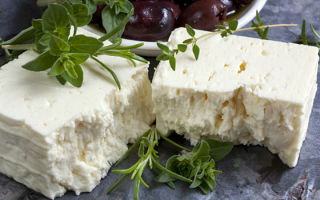Content
- 1 Feta cheese production technology
- 2 Composition and calorie content of feta cheese
- 3 Useful properties of feta cheese
- 4 Is feta cheese good for weight loss?
- 5 Homemade feta cheese recipe
- 6 How to use feta
- 7 Harm of feta cheese
- 8 Who shouldn't eat feta
- 9 What is the difference between feta and feta cheese
- 10 How to choose and store correctly
Semi-hard white feta cheese has an unusual salty taste, but this is not its only feature. Let's figure out what the benefits and harms of feta cheese are.
Feta cheese production technology
Natural patented Greek product is made from a mixture of goat and sheep milk, the fat content always remains at the level of 30-60%. The classic manufacturing technology is as follows:
- The milk is heated until curdling.
- Then liquid serum drained, and the resulting milk mass is suspended for some time in linen bags so that the remaining liquid is drained from it.
- After a couple of days, the dense residue is placed in special molds and poured with saline or simply sprinkled with sea salt.
- After that, the product is pressed and left to ripen for a rather long period of time: from 2 weeks to 2 months.
The completely finished product is cut into pieces and packed in containers for sale, and it is still placed in a saline solution.
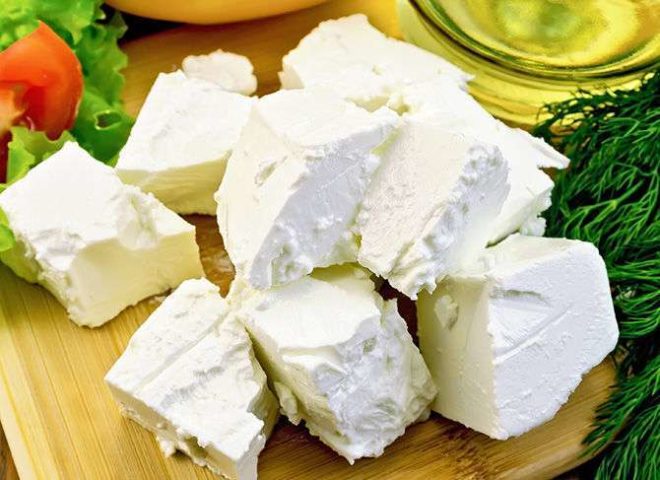
Composition and calorie content of feta cheese
Healthy cheese contains the most important components:
- vitamins B12 and B2;
- nicotinic acid, also known as vitamin PP;
- vitamin A;
- large amounts of sodium and magnesium;
- calcium and phosphorus - a daily rate of 100 g of the product;
- zinc - a third of the daily amount.
Also, the dish contains microorganisms that are valuable for the normal functioning of the intestines. And the calorie content of feta cheese per 100 grams is not so high - only 290 calories. The main share in the composition is occupied by fats (24 g), there are a lot of proteins in it (17 g).

Useful properties of feta cheese
Amazing product
- strengthens bones and teeth, prevents the development of osteoporosis and other joint diseases;
- normalizes bowel activity, cleanses the body of toxins, helps with poisoning;
- protects the heart system and blood vessels, prevents diabetes;
- has a calming effect on the nervous system;
- increases resistance to viruses and infections, promotes rapid transportation of oxygen through tissues.
Valuable properties are expressed in the fact that such food is very useful for gaining muscles due to its high protein content.
Feta during pregnancy and breastfeeding
The product saturates the body with calcium, phosphorus and potassium. When carrying a child, it is definitely allowed, albeit in moderation. The only harm can be with hypertension or kidney problems.
The same goes for eating the product during lactation. Feta can be introduced into the diet from the first days after childbirth. But at first, you need to carefully monitor whether the baby will develop allergies.
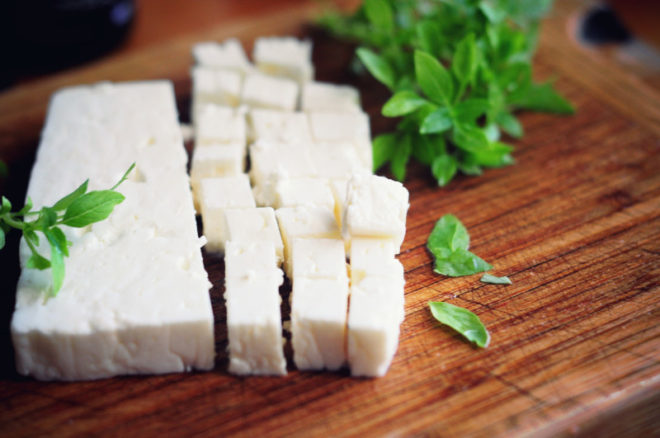
Is feta cheese good for weight loss?
The antioxidant properties of the product make it attractive to the diet. It will help cleanse the body of toxins and start the process of burning fat.In addition, it contains few calories, and it is almost impossible to gain weight in small portions.
Homemade feta cheese recipe
It will not work to repeat the industrial manufacturing technology at home. But you can still cook salted cheese in your kitchen, and there will be considerable benefits in it.
You will need the following ingredients:
- natural milk powder - 400 g;
- 600 ml of warm drinking water;
- the digestive enzyme abomin, which can be bought at the pharmacy (3 tablets);
- 100 g sour cream;
- a teaspoon of salt and half a teaspoon of vinegar.
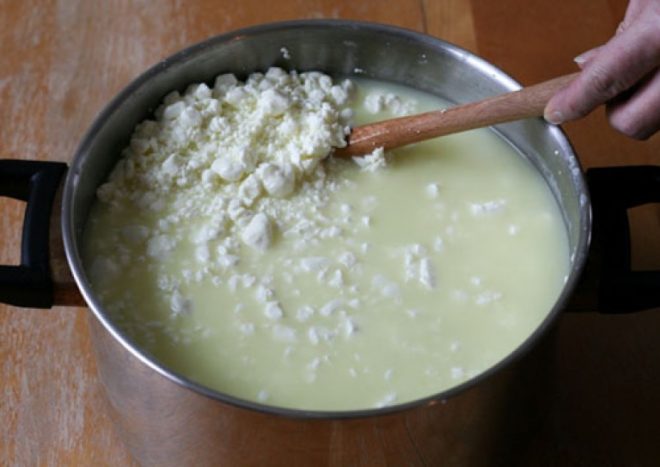
- Stir milk thoroughly in water, add sour cream and stir again.
- Then, the abomin, previously diluted with water, is poured into the mixture, vinegar and salt are added, and mixed again.
- The prepared mixture must be kept in a warm place for about 12 hours, and then drain the liquid serum through cheesecloth folded several times.
- The remaining cheese mass must be wrapped in cheesecloth and placed under a homemade press weighing about 3 kg.
- After 10 hours, the product will be ready - it will remain to be cut into pieces and pour over with brine.
The brine is made quite simply: add more salt to the boiled water and let the water cool down.
How to use feta
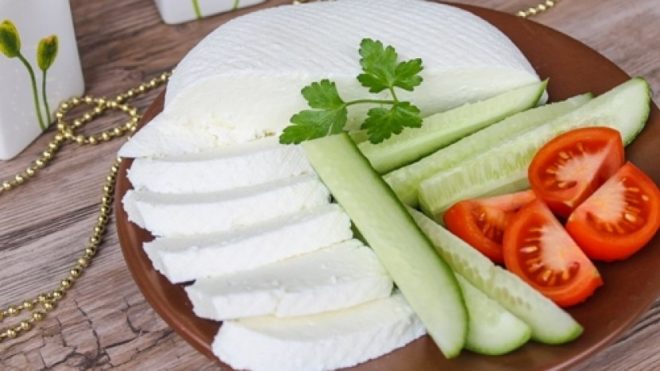
You can eat a delicacy separately, but it is much tastier in combination with other products:
- with vegetables and eggs - as part of salads, omelets, fried eggs;
- in pita bread - a healthy delicacy becomes an unusual filling;
- in baking - the properties of the product make the pies not only tasty, but also very healthy;
- with sandwiches.
The benefits of such dishes will be noticeably greater if you add feta to them.
Harm of feta cheese
No matter how great the benefits of the product, if you use it carelessly, you can harm your body. Some properties are dangerous even for perfectly healthy people.
- Saturated fat in large quantities is harmful to the heart system.
- The high salt content in the product can harm the kidneys, heart, blood vessels, provoke hypertension, and clot blood.
- Salt provokes thirst and retains fluid in the body.
It is recommended to eat no more than 75 g of the product per day - this dosage is safe.
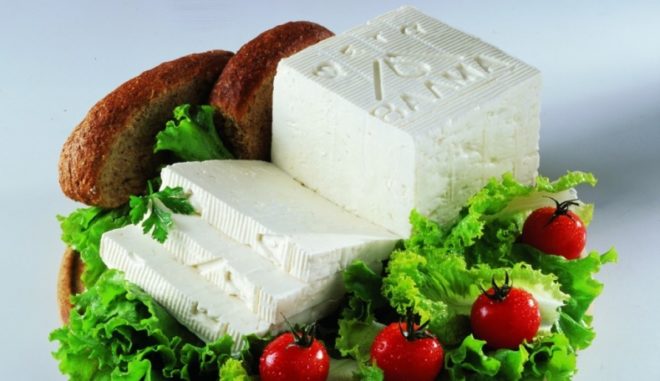
Fake feta made on the basis of pasteurized milk with the addition of GMOs and antibiotics can also harm the body. Healthy cheese is only natural.
Who shouldn't eat feta
Greek cheese also has several strict contraindications:
- angina and ischemia;
- arthritis;
- chronic severe diseases of the intestines, stomach and kidneys;
- type II diabetes;
- obesity tendency.
Of course, it is better not to try milk cheese for those who are allergic to foods containing lactose.
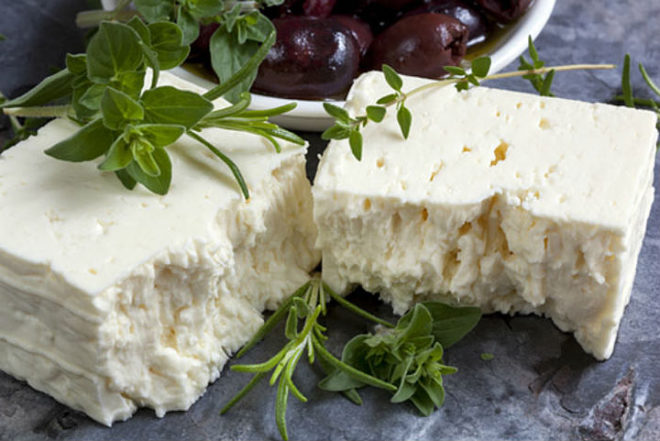
What is the difference between feta and feta cheese
Greek cheese is often confused with feta cheese - and indeed, the products are similar in appearance and taste. However, their properties are completely different.
- Bryndza is a hard cheese, feta has a soft texture.
- The most beneficial properties of feta are the high content of protein, calcium and vitamin A. A high concentration of potassium, sodium and sulfur is concentrated in feta cheese.
- Feta is produced in Greece, feta cheese - in Romania.
- Greek cheese should be white, Romanian may have a yellow tint.
- Feta is stored exclusively in a saline solution; feta cheese can be kept in the refrigerator on a plate.
How to choose and store correctly
Choosing a healthy feta cheese is not difficult: you only need to know a few rules.
- Real cheese is of Greek origin. And the packaging always says "feta cheese", not "cheese product".
- Quality cheese should be white. If there is a distinct yellowness, then, most likely, it was not stored correctly.
- The texture of feta is loose and crumbly, similar to cottage cheese.
- The composition of good cheese is completely natural, without unnecessary additives, and the main ingredient is sheep or goat milk.
Store the product only in the refrigerator. At the same time, healthy cheese retains its properties only in brine - the liquid cannot be poured out of the container. The maximum shelf life is 3 days - after that, the use of the product will become dangerous.
The benefits and harms of feta cheese are determined primarily by the measure of consumption. In too large quantities, a salty product is dangerous, in small quantities it will have a beneficial effect on the body in the absence of contraindications.

